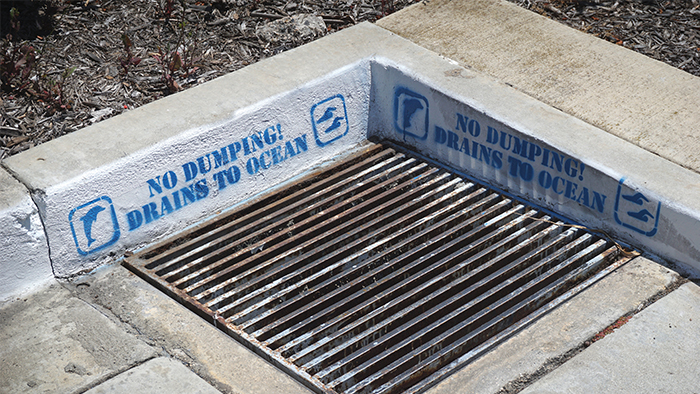Hazardous Waste Pharmaceuticals–Regulatory Amendment Update
- 06/25/2019
The US Environmental Protection Agency (EPA) recently passed amendments to its hazardous waste regulations. These new rules, found at 40 CFR 266 Subpart P, apply to the management and disposal of pharmaceutical waste by healthcare facilities. The intent of the new rules is to provide a framework that is more efficient and effective for the healthcare sector, while still being protective of the environment and human health.

Healthcare facilities impacted by the new rules include some types of facilities commonly found in retail. These include health clinics, optical providers, pharmacies (including long-term care and mail-order pharmacies), and retailers of pharmaceuticals. The rules generally do not apply to pharmaceutical manufacturers.
The new Subpart P rules define pharmaceuticals to include prescription drugs, dietary supplements, over-the-counter drugs, homeopathic drugs, compounded dugs, investigational new drugs, electronic nicotine delivery systems (like vape pens, e-cigarettes, and their cartridges and refill vials). The rules also apply to residual pharmaceuticals remaining in containers or contaminating personal protective equipment (PPE) like gloves, and to materials used to clean up spills of pharmaceuticals. The rules do not apply to dental amalgam, sharps, or medical waste – which are covered under other rules at the federal and state levels.
The new rules focus on three main concepts that impact healthcare facilities:
- Prohibit sewer disposal of hazardous waste pharmaceuticals
- Re-evaluate the listing of nicotine as an acutely hazardous waste (P075)
- Establish new rules for the management and disposal of waste pharmaceuticals that are expected to be more efficient for the healthcare industry
Note that there are other aspects of the new Subpart P rules that apply to reverse distributors and are not discussed here.

The prevention on sewer disposal of hazardous waste pharmaceuticals was issued under the authority of the Hazardous and Solid Waste Amendments and is effective in all states on August 21, 2019. EPA has long discouraged sewer disposal of pharmaceuticals, but this rule makes it illegal for healthcare facilities and reverse distributors to put hazardous waste pharmaceuticals into the sewer system (such as discharging syringes into a sink or flushing pills down a toilet). EPA continues to discourage sewer disposal of pharmaceuticals that are not hazardous waste, and some states and municipalities have banned this as well.
In the past, EPA has required the management and disposal of nicotine patches, gums, and lozenges – and the containers and packaging associated with these items – as acutely hazardous waste (waste code P075). This has been challenging for the healthcare industry because there are very low thresholds for the generation and accumulation of acutely hazardous waste. With the new rules, EPA has determined that FDA-approved over-the-counter nicotine replacement therapy products no longer need to be managed as acutely hazardous waste. Patches, gums, lozenges, and their associated packaging can be disposed of as non-hazardous waste (i.e., municipal solid waste or trash). Other types of nicotine products, such as e-cigarettes and their associated cartridges and vials, prescription nicotine, pesticides containing nicotine, and nicotine used in research and manufacturing must still be managed as acutely hazardous waste (waste code P075). This portion of the new rules only applies in states and territories where EPA manages the hazardous waste program – Iowa, Alaska, Indian Country, and US Territories (except Guam) – on August 21, 2019. Other states have to adopt the changes before they are effective.
Finally, the new Subpart P rules provide a new framework that healthcare facilities can use for managing and disposing of waste pharmaceuticals. Facilities must either determine if individual waste pharmaceutical products are hazardous or non-hazardous, or they can opt to manage all of their waste pharmaceuticals as hazardous waste. The framework considers "potentially creditable," "non-creditable," and "evaluated hazardous waste" pharmaceuticals.
- Evaluated hazardous waste pharmaceuticals are those that have been characterized – anywhere within the management process – as being hazardous waste. These must still be sent to a facility that is licensed to accept hazardous waste for treatment and disposal.
- Non-creditable items include those that a facility would not expect to receive reverse distribution credit for, such as items that are broken or leaking, repackaged, dispensed, or more than one year past their expiration date. Non-creditable items also include investigational new drugs, contaminated PPE, floor sweepings, and spill clean-up materials. Under the new rules, healthcare facilities that opt to manage all waste pharmaceuticals as hazardous waste can store non-creditable hazardous and non-hazardous waste pharmaceuticals (comingled) in closed and structurally sound containers, labeled as "Hazardous Waste Pharmaceuticals," for up to one year. When sending these materials to a disposal facility, they will use the code "PHARMS" on the hazardous waste manifest instead of individual waste codes. (Reverse distributors must use the traditional waste codes.)
- Potentially creditable items are those that a facility reasonably expects to receive reverse distribution credit for, such as items in their original manufacturer packaging (except recalled products), un-dispensed products, and products that are either not yet expired or that are less than one year past their expiration date. Under the new rules, healthcare facilities that opt to manage all waste pharmaceuticals as hazardous waste can comingle potentially creditable hazardous and non-hazardous waste pharmaceuticals in a single container that is not subject to labeling requirements or accumulation time limits. They will send the items to a reverse distributor by common carrier (e.g., FedEx, UPS, US Postal Service) using a trackable method with delivery confirmation.
The new management framework only applies in states and territories where EPA manages the hazardous waste program – Iowa, Alaska, Indian Country, and US Territories (except Guam) – on August 21, 2019. Other states will have to adopt the changes before they are effective, and each state may choose to make certain modifications or adjustments to the Federal rules.
For more information, visit the US EPA's webpage on the new rules:
